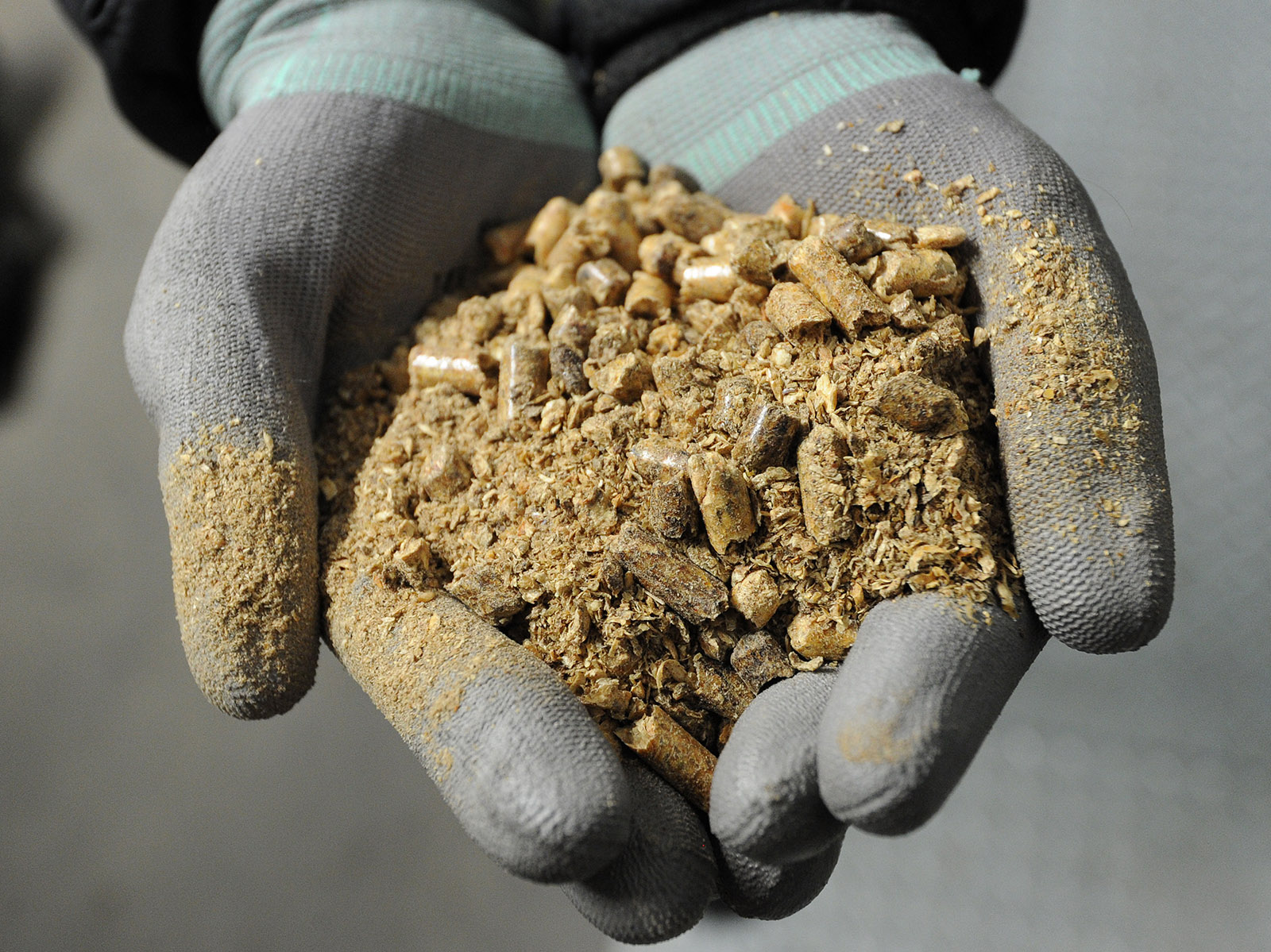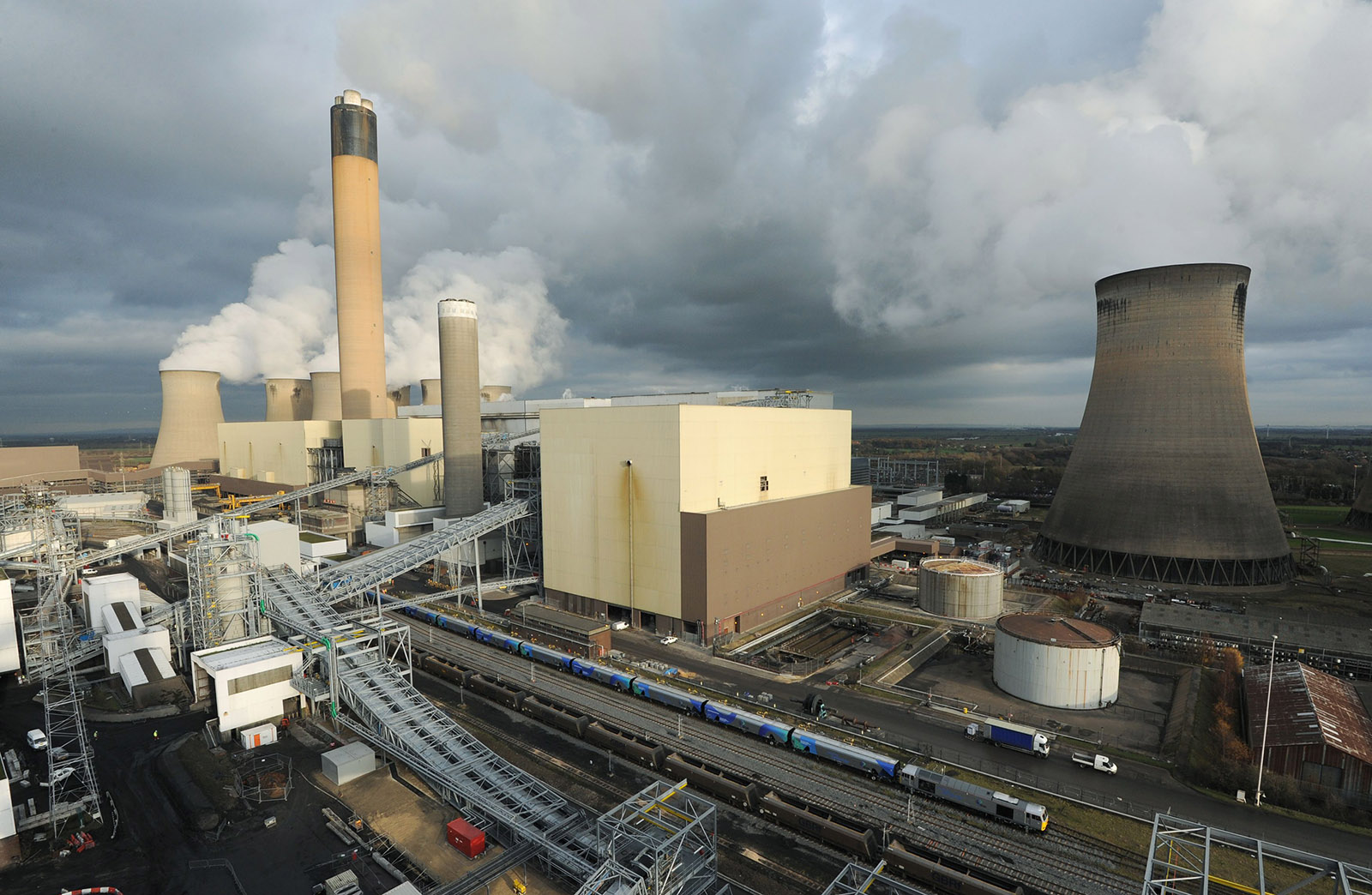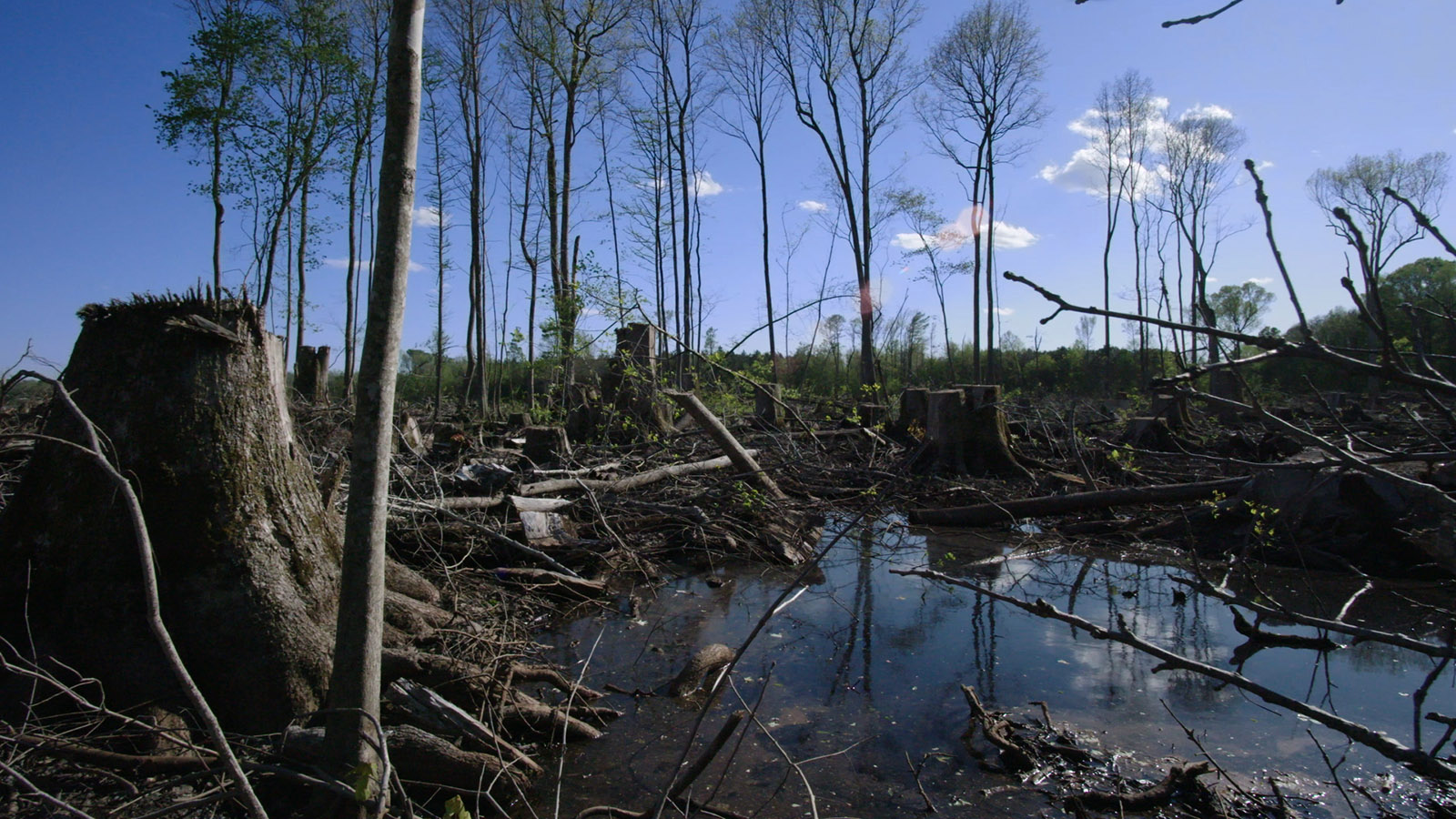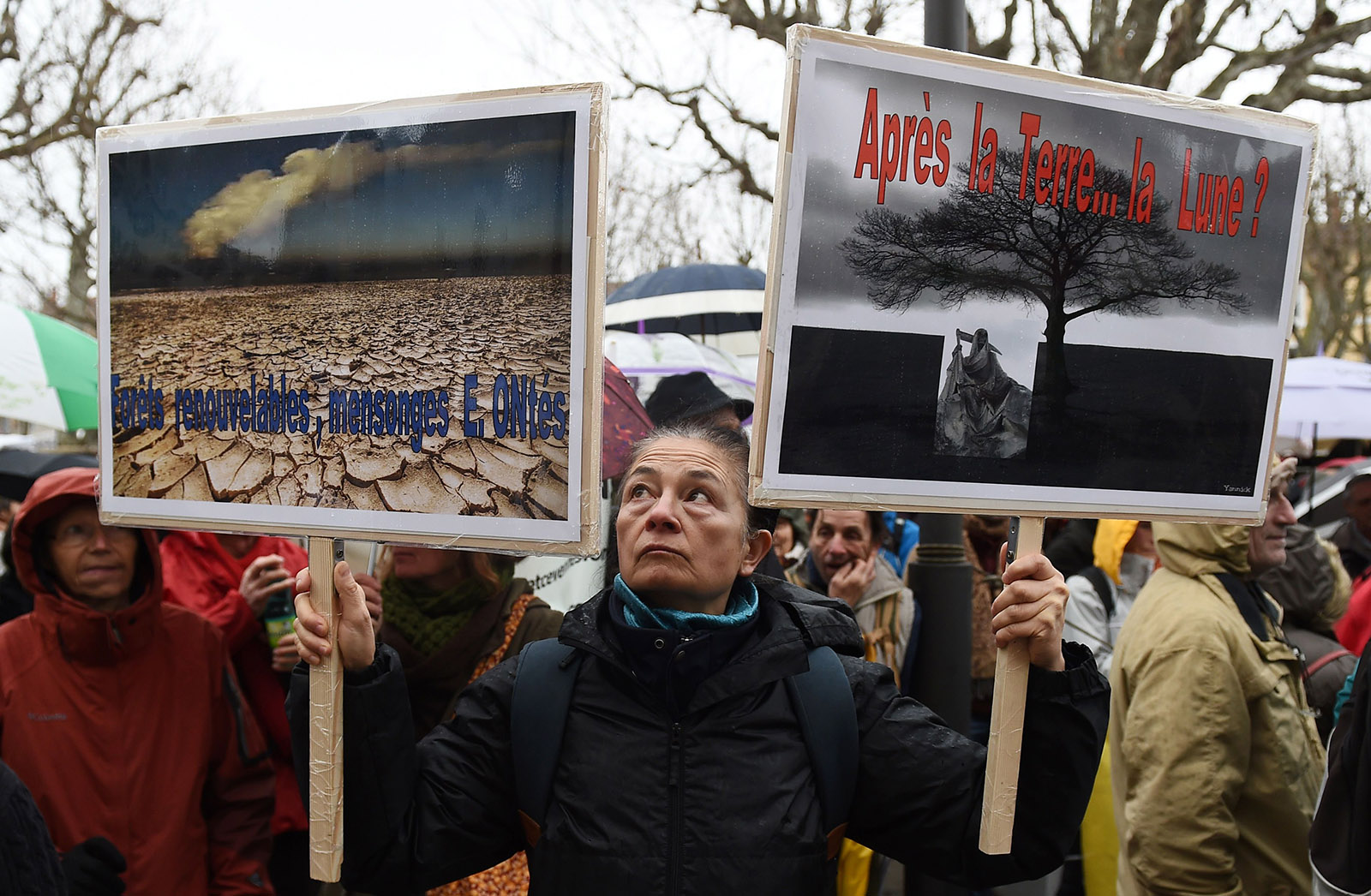The urgency of the climate crisis is inspiring some extreme and unproven ideas for how to hide carbon and cool the planet, such as ocean fertilization, turning CO2 into rocks, and seeding the atmosphere to dim the sun. Arguably one of the most reckless ideas, though, is already well underway: burning “forest biomass”—that is, trees—in power plants as a replacement for coal. The problem with this so-called green energy source is that instead of decreasing greenhouse gas emissions, it increases the amount of CO2 coming out of the smokestack compared to fossil fuels, and the climate “benefit” is claimed by simply not counting the emissions.
While policymakers in developed countries (the European Union, the United States, Canada, Japan, and Korea, among others) seem perfectly happy with this solution, scientists and activists are reacting with bewilderment and fury as entire forests are vaporized into the atmosphere in the name of renewable energy. Meanwhile, the burgeoning biomass and wood-pellet industries are dancing away with billions in renewable energy subsidies. To counter this atrocious trend, I founded an organization in 2010, the Partnership for Policy Integrity, to provide reliable science and policymaking clarity on the forest and climate impacts of burning forests for fuel. Since then, many environmental groups have joined the fight, but we still haven’t ended this parade of stupidity, because the forces are powerful and the pool of money is deep.
Like many damaging forms of economic activity, the biomass industry started out small and at first flew under the radar. For decades, sawmills and pulp and paper manufacturers have burned sawdust, wood scraps, and black liquor (the condensed chemical slurry left over from wood pulping) to produce heat and power. Environmental groups were content to call this green energy considering that the alternative had been incineration or dumping black liquor into streams. And since these other outcomes would generate CO2 anyway, burning such materials was considered to provide carbon-neutral energy. Few people questioned why even the filthiest, most polluting biomass boilers at paper mills—some producing sulfur dioxide emissions to rival those of coal plants—were getting renewable energy subsidies, and over time these subsidies (along with federal renewable energy tax credits) became an important source of revenue for wood-consuming industries.
As more US states enacted renewable energy mandates, however, developers and speculators cashed in on subsidies by building more standalone wood-burning power plants designed solely to put power on the grid. The trend appears to have peaked in the US in 2010 with the post-financial crash stimulus program, which issued cash grants for renewable energy production, including biomass power. Burning wood to produce electricity is expensive, and many plants are not competitive even with supplemental green energy payments. As a result, in the United States the biomass industry has slowed in recent years, although the continued treatment of bioenergy as renewable means it might receive another boost though programs like a Green New Deal.
In the EU, however, where subsidies and incentives have been more consistent and lucrative, wood consumption for energy has careened upward, more than doubling between 2000 and 2017. Eurostat data on renewable energy and forestry reveal that wood comprises about 35 percent of total renewable energy inputs in the EU, though actual delivered heat and electricity are lower because the technologies for converting inherent energy to useful energy are extremely inefficient. Fuelwood now comprises about a quarter of all forest harvesting in the EU, and total consumption of wood for energy has risen to over 400 million tons a year. A small but increasing portion of this tonnage is in the form of wood pellets, which burn hotter than green wood chips and are easier to ship and handle, making them an effective substitute for coal and residential heating fuels.
Much of the EU’s forest industry operates under strictures, with the result that, as demand for “energy wood” increased, so has harvesting in less regulated forests, especially in the southern US and Canada. There, the wood-pellet industry has grown exponentially, but it has also expanded in the less scrutinized corners of Europe, such as the boreal bog forests of Estonia and the ancient forests of the Carpathian Mountains in Slovakia, Ukraine, and Romania, home to the lynx, bears, and wolves of old European folktales.
Wood pellets are still just a fraction of the total wood burned for energy in the EU, yet, even so, the industry’s impacts have been horrendous. The wood-pellet industry has become particularly controversial in the American South, where a company named Enviva, the largest wood-pellet producer in the world, set up shop and quickly got to work liquidating forests. The South is known as the US’s “wood basket,” thanks to its endless rows of plantation pine, but the wood-pellet industry has also targeted natural forests, including some of the most carbon-rich, biodiverse wetland forest ecosystems of the eastern United States.
Advertisement
Hardwoods are a preferred pellet feedstock because the processing, grinding, cooking, extruding, and cooling of wood pellets made from pine emit large quantities of volatile organic compounds (VOCs), a class of federally regulated pollutants. Enviva did not want to pay for the installation of VOC pollution-control technology at some of its plants, so officials in the state of Virginia who issue air permits instead required the company to use a minimum amount of hardwood feedstock in order to reduce VOC emissions. Soot emissions have also emerged as a chronic problem at wood-pellet production plants in the US South.
Clearcutting is never pretty, but there is something especially sickening about seeing a forest annihilated for supposedly green energy. The wood-pellet industry’s excesses—including its misleading claims that it uses only “forestry residues,” commonly understood to be the tops and limbs of trees that have otherwise been harvested for lumber—are exposed in a half-hour documentary, Burned: Are Trees the New Coal?, made by Lisa Merton and Alan Dater of Marlboro Productions, and now streaming for free at Link TV (full disclosure: I gave technical advice to the filmmakers and appear in the film). The film features the intrepid staff of a North Carolina environmental group, Dogwood Alliance, as they wade chest-deep though snake-infested wetlands to reach forest clearcuts and then follow trucks loaded with logs back to the pellet plant.
The film then follows the pellets as they are shipped overseas and burned for electricity, including at Drax, a 4,000 MW power plant in the UK that has converted four of its six boilers to burn wood pellets instead of coal, and currently provides around 7 percent of the UK’s electricity. The scale of this operation is astounding, with a year’s worth of pellets consumed by Drax representing wood mass approximately equivalent to clearcutting a forested square extending to eighteen miles on each side.
Not content with the existing supply of pellets from Enviva and other companies, Drax has built its own pellet plants in the US. The paradox of Drax’s investment in such “vertical integration” is that it will likely make the company more vulnerable when the bioenergy scam inevitably fails. In the meantime, though, Drax receives renewable energy subsidies funded by the British public to the tune of about a billion dollars a year, or $2.78 million per day, as of 2017.
While wood pellets from North American forests feed Europe’s large biopower plants, much of the biomass harvested within the EU ends up as green wood chips that fuel thousands of smaller heat and power plants, and as pellets that are sold for residential and commercial heating. Traditional firewood harvesting also still constitutes a large share of this domestic use. Wood fuels are shipped all over the EU, and the fragmented nature of the industry, with tens of thousands of suppliers, means that there is little transparency in the supply chain and an increasing risk of wood coming from forests that are supposed to be protected.
Illegal logging happens for all kinds of reasons, but the demand for energy wood is an increasing driver, as previously “low-value” wood can be monetized. Working with the Environmental Investigation Agency, the Romanian nonprofit Agent Green has exposed, sometimes at great personal risk, how wood logged out of the primeval forests of the Carpathians ends up as firewood or bagged wood pellets sold at Austrian hardware stores as a source of “green” heat. Analysis of satellite imagery reveals tree cover decimated throughout the Carpathians—and indeed, the same liquidation of forests is happening in Estonia, Latvia, the southern US, and British Columbia in Canada. These are all places where the wood-pellet and biomass industries have taken hold and are adding to existing pressures on forests.
*
How, then, did trees from southeastern US wetlands and ancient European forests come to be classified as a zero-carbon renewable energy source—not just in the EU, but also in Japan and Korea? For these countries, too, are increasingly importing wood pellets from more forested nations as they phase out coal. The rationalizations involved in this scheme induce moral and intellectual whiplash, because they seem to shift constantly, and ultimately, to make no sense.
Countries all over the world report their greenhouse gas emissions annually to the United Nations. International carbon-accounting rules require carbon loss from forest harvesting to be reported in the “land sector.” The first problem is that harvested forest wood is not reported as an emission, even if it is burned for energy, but simply shows up as a reduction in that country’s reported forest carbon uptake year to year. However, since the lost forest carbon has ostensibly already been noted in the land sector, energy sector emissions of CO2 from burning the resulting biomass are counted as zero, to avoid counting the carbon loss twice.
Advertisement
Although it inevitably undercounts forest-harvesting impacts, this system by and large works as a way of characterizing gross fluxes of forest carbon at the national level. The problem is that in justifying subsidies for renewable energy, policymakers and forest industry representatives (who may sometimes be the same people) have reified the concept of bioenergy as counting as zero when burned, to bioenergy actually having emissions of zero globally. This means that when it comes to financial support, bioenergy is usually treated as equivalent to zero-emissions technologies such as wind and solar as a way of mitigating climate-warming.
Wood-burning power plants in fact emit more CO2 per megawatt-hour than even coal plants. In order to reconcile this physical reality with the billions provided in subsidies intended to reduce emissions, the biomass industry has come up with more and more outlandish explanations for why burning trees should be considered automatically carbon-free.
When annual crops are used to make liquid biofuels like corn ethanol, the biomass portion of the fuel’s net emissions is considered carbon-neutral because yearly crop regrowth and carbon uptake are assumed to offset the CO2 emitted by fuel combustion the year before. Clearly, this argument does not work for forest biomass, because trees take decades to regrow. Deprived of the regrowth argument, the biomass industry claimed for years to utilize only mill waste and forest residues from sawtimber harvesting (wood that, it was claimed, “would decompose anyway”), even when the industry was deliberately cutting forests for fuel. For far too long, policymakers accepted similar claims from the wood-pellet industry, even as environmental groups on the ground documented widespread clearcutting and the use of large-diameter timber as pellet feedstock.
Lost in this argument, though, was the important fact that even if the biomass and pellet industry were only using forestry residues, burning those residues emits CO2 instantly, while the same wood left to decompose emits it over years, if not decades. Thus, far from being zero-carbon, the cumulative net emissions from burning forestry residues for fuel still speeds the transfer of forest carbon into the atmosphere, and the accumulated net impact of such emissions likewise speeds warming.
When the pellet industry ran out of road for its false claims about residues, it came up with a new rationale to justify biomass as instantly carbon-neutral: as long as forests are growing more wood than is being cut, and are thus harvested “sustainably,” burning any of that wood has zero net emissions. This sophistry gained a surprising amount of traction with policymakers considering it essentially postulated that the carbon just disappears, thus violating a basic physical principle of the conservation of mass.
By this logic, even as the biomass industry levels more forest, it must claim offsetting carbon uptake in an ever-increasing area of forests elsewhere to neutralize those emissions. But this notion quickly bumps up against the reality that the amount of carbon locked up in forests is decreasing globally; there is no epic and immediate regrowth on this planet that is compensating for all the supposedly sustainable harvesting. (The correct accounting approach, in fact, recognizes that forest carbon uptake is already counted as offsetting a portion of existing fossil-fuel emissions; the biomass industry’s claim seeks to double-count that benefit.)
The concept of carbon neutrality is so central to the biomass industry that if it were overturned, the entire rationale for the industry would virtually disappear. Companies know this, which is why they continually make misleading statements such as Enviva’s claim that burning its pellets “reduces” greenhouse gas emissions compared to burning fossil fuels. The company does not reveal that this claim relies on reporting only fossil-fuel CO2 emissions from manufacturing and transporting pellets, and on simply not counting the CO2 coming out of the smokestack when the pellets are burned.
Since publicly traded companies like Enviva have a duty to disclose information that is material to shareholders’ interests—and a corresponding duty not to make false statements—my group filed a complaint with the Securities and Exchange Commission against the company in 2016 over its misleading claims about emissions. On the recommendation of the SEC’s secretary, we also petitioned the SEC for a rule-making that would require all publicly traded bioenergy companies to disclose their real emission impacts. We still await action from the SEC, even as billions more dollars flow into “green” bioenergy investments.
It’s not just the companies that want to ignore emissions. Pro-bioenergy legislators in both the US and the EU also regularly mislead the public on the impacts of the industry. In the US, Maine Senators Susan Collins and Angus King, both strong biomass boosters, shoehorned a rider into a congressional appropriations bill, enacted in 2018, that forces the EPA to treat forest biomass as carbon-neutral—despite the recent findings of a multiyear EPA task force, which concluded that burning wood can have significant net emissions. (One of the more darkly humorous moments in Burned is watching Senator Collins spout, almost verbatim, talking-points scripted by biomass industry lobbyists in a floor speech on bioenergy.)
The US senators and their industry allies hoped to build markets for biomass by replacing coal. Unfortunately for them, not even the Trump EPA was up to the deception required to claim that burning biomass reduces emissions. Despite the legislative order to treat biomass as carbon-neutral, the EPA’s final “Affordable Clean Energy” rule concluded that burning biomass emits more CO2 than fossil fuels, and that co-firing biomass with coal degrades a power plant’s efficiency. So much for the “trees are growing somewhere” theory.
In the EU, though, pro-bioenergy legislators have been more adept. The EU sets the rules for renewable energy implementation and subsidies in member states, revising its Renewable Energy Directive every ten years. Horrified by the accelerating forest carnage under the current directive, the nonprofit and scientific communities lobbied hard at the EU for constraints on the use of forest wood as a renewable fuel in the 2018 RED that sets policy for 2021–2030. The EU’s own team of advisers, the European Academies Science Advisory Council, warned the EU’s president, Jean-Claude Juncker, in January 2018 that:
The legal mandate to record forest biomass-fired energy as contributing to the EU’s renewable energy targets has had the perverse effect of creating a demand for trees to be felled in Europe or elsewhere in order to burn them for energy, thus releasing the carbon into the atmosphere which would otherwise stay locked up in the forest, and simultaneously drastically reducing the carbon sink strength of the forest ecosystems… [T]he current use of imported pelleted forest biomass was leading to increased greenhouse gas emissions with no guarantee of when (or even if) the additional carbon released to the atmosphere would be offset by forest regrowth.
Rather than conclude that the biomass subsidy program is based on a fraud, the EU policymakers’ response was to devise a Potemkin set of “sustainability” criteria for biomass that will do almost nothing to protect forests and the climate. The revised directive claims that the new constraints will “continue to ensure high greenhouse gas emissions savings compared to fossil fuel alternatives” and “avoid unintended sustainability impacts”—as misleading a statement as I have ever seen in public policy.
Since all the usual tactics of the nonprofit community had failed, including documentary photos, briefings, and scientific evidence, we felt we had no choice but to sue the EU (with the European Parliament and Council as defendants) over the new rules. My organization thus coordinated a March 2019 lawsuit that challenges inclusion of forest biomass in the new renewable energy directive. We worked with plaintiffs from the EU and the US who demonstrated in their testimony how the biomass industry is causing direct harm to their health and livelihoods, and we are now waiting to hear whether the EU court will accept the case.
Climate science shows that to avoid the most catastrophic warming impacts, the world must cut its carbon emissions in half in the next few years, and be carbon-neutral, balancing emissions with carbon uptake, by 2050. There is no way to achieve this without a vast restoration and expansion of the world’s forests. Provided these forests are natural and not monoculture plantations, this initiative could also help to address another great environmental crisis we face, the extirpation of so many of the world’s species. Many member states have signed on to the EU goal of carbon neutrality by 2050, but a great deal must change: right now, EU member states allocate billions in renewable energy subsidies to promote wood-burning, but little to forest restoration.
A new law enacted in Slovakia is a brave start, given the typical bullying from the forest industry. After forest activists at WOLF Forest Protection Movement (the lead plaintiff in the biomass lawsuit) demonstrated damage to forests from biomass harvesting, the government last year restricted bioenergy subsidies to mill residues and energy crops, eliminating subsidies for forest wood. On this side of the Atlantic, similar rules in Massachusetts took low-efficiency wood-burning power plants off the renewable energy menu in 2012—although the state’s current Republican governor seems intent on overturning those forest protections. It really is this simple: to mitigate climate change, we need to grow more trees, not burn them for energy. Policymakers need to wake up, because we’re running out of time.







